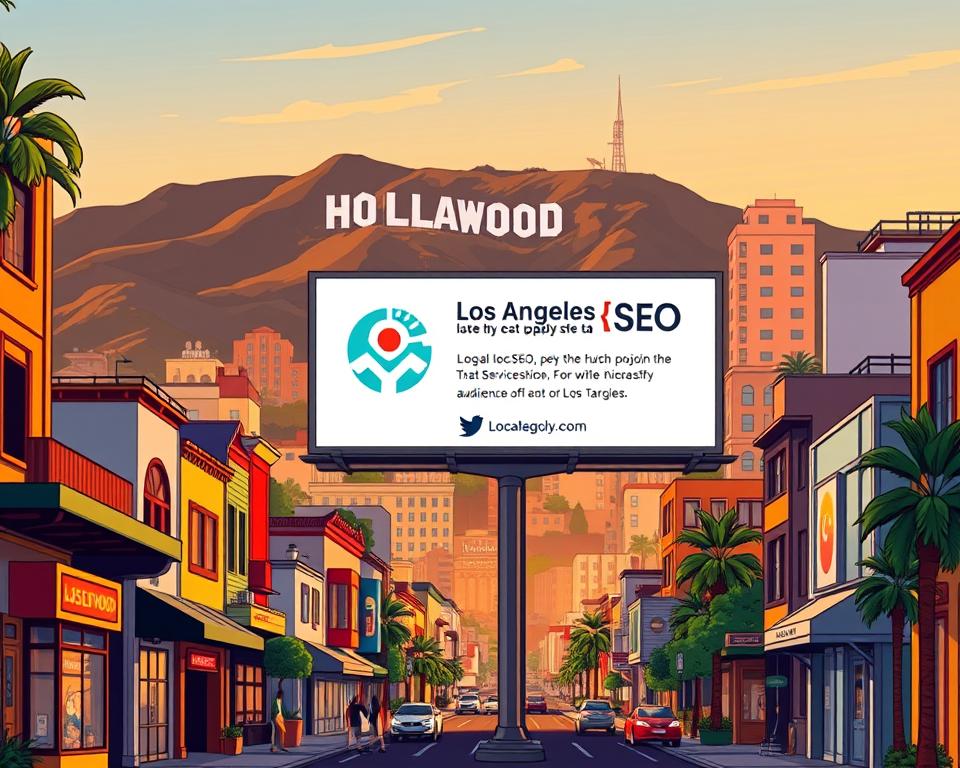The Journey of Development in Online Marketing: An Voyage
Were you aware that more than 170M individuals regularly utilize social media, effectively transforming the marketing landscape? As buyers more and more move online, online marketing has surfaced as a essential tactic. It enables organizations to interact customers on venues where they spend a considerable portion of their attention. This change marks the transformation of digital marketing evolving from conventional methods to a more interactive and participatory methodology.
With an estimated online advertising market worth of around $200 billion, it’s apparent that Arvada Digital Marketing Company must adjust to the continuing internet marketing trends. This is vital to remain competitive in this fast-paced market.
The increase of digital channels has allowed businesses to access markets that conventional advertising techniques struggle to target. It’s no longer required when a simple advertisement in a periodical would be enough. Currently, focused marketing approaches have gained prominence, utilizing methods like search engine optimization (SEO), social channels, and influencer alliances.
As we investigate the evolution of digital marketing, we will delve into major milestones and patterns. These have molded the existing marketing framework. We will demonstrate the unique opportunities and obstacles encountered by organizations in this digital era.
Main Points
- Exceeding 170M users regularly participate on digital platforms, creating extensive promotional opportunities.
- Digital marketing is to be cheaper than conventional techniques, facilitating broader reach with reduced costs.
- The global digital advertising market is forecasted to hit $517 billion by the close of 2023.
- Focused strategies like Search Engine Optimization improve digital visibility and participation for businesses.
- Social media influencers have created a one billion dollar sector, transforming brand marketing.
- Companies utilizing mobile advertising strategies can tap into the increasing consumer trust on mobile devices.
- Investing in digital marketing tools, like Google AdWords, allows for precise targeting based on demographic data.
Introduction to Digital Marketing
Digital marketing encompasses a variety of promotional activities across multiple digital channels. This covers social media, email, search tools, and sites. It’s a essential element of current marketing, due to the growing digital interaction between audiences and companies. Businesses that comprehend the essentials of online marketing can craft approaches that efficiently connect with their desired audiences.
The development of internet marketing is propelled by evolving consumer behaviors. The advent of smartphones has changed promotion and sales. Currently, companies use integrated strategies to meet the demands of consumers who engage with multiple devices and platforms. Given the focus duration of millennials and Gen Z, materials must be engaging and powerful from the start. Research indicate that incorporating video content can enhance communication effectiveness by up to three hundred percent.
The rising role of digital marketing highlights the requirement to stay abreast of emerging trends and technologies. Tools like artificial intelligence chatbots allow deep customer interaction, while influencers assist establish trust with consumers. Traditional marketing methods are no longer sufficient, highlighting the crucial nature of holistic digital strategies that address today’s buyer needs.
| Aspect | Description |
|---|---|
| Consumer Behavior | Transition to online engagement, reduced attention spans (twelve seconds for Generation Y, eight seconds for Gen Z) |
| Technology Usage | Increase in mobile technology, growth of engaging technologies |
| Marketing Strategies | Emphasis on integrated and influencer marketing |
| Engagement Instruments | Employing AI-powered chatbots and video pieces in marketing campaigns |
| Sector Evolution | Expansion of digital advertising post-2000, introduction of PPC advertising with platforms like Google AdWords |
What is Digital Marketing?
Online marketing includes a array of tactics to connect with audiences through digital channels. It covers SEO strategies, content strategies, and social media participation. The primary objective is to successfully reach and interact with intended audiences using extensive data and advanced technologies.
The growth of internet advertising has been substantial in the last few years. As businesses dig deeper into the digital landscape, the requirement for effective online marketing tools grows. For instance, fifty-three percent of all online traffic comes from unpaid search results, highlighting the role of SEO in increasing visibility and website traffic.
Innovations in content marketing are essential to a brand’s engagement with potential customers. The content marketing industry is forecasted to attain two trillion dollars by 2032. It’s essential for companies to adapt their approaches to efficiently utilize these programs. Compelling content establishes bonds, enhancing brand loyalty and awareness.
Moreover, the crucial nature of strong Customer Relationship Management (CRM) tools has increased. Businesses that employ consumer insights can create targeted marketing campaigns. This causes improved engagement and conversion rates.
In conclusion, digital marketing is a evolving driver for companies seeking to increase their digital footprint. By embracing the latest in internet advertising and cutting-edge content marketing, companies can increase online visibility and attain increased audience engagement.
Progression of Digital Marketing
The marketing landscape has seen a substantial change over the time. The evolution of online marketing demonstrates how the internet has changed corporate communication with audiences. As traditional methods became old-fashioned, online platforms surfaced, presenting new ways to engage consumers and track outcomes.
Moving from Traditional to Digital: A Key Transformation
The move from traditional to digital marketing has dramatically changed the marketing sector. Traditional methods like print advertising, radio, and television presented minimal interaction. Internet advertising, however though, enables live interaction and analytics. The initial clickable banner advertisement in 1994 signified the start of digital marketing as we recognize it today.
This shift enabled companies to test and refine their methods, leveraging the online world to engage consumers.
The Emergence of the Internet and Digital Marketing
The rise of the internet ushered in a new advertising era. At first, organizations launched sites, preparing the foundation for internet marketing. The end of the 1990s experienced the increase of search engines like Yahoo! and Alta Vista, emphasizing the importance of SEO in internet marketing.
This change established new pathways for reaching audiences actively seeking offerings, drastically altering customer-business relationships.
| Date | Achievement | Impact on Digital Marketing |
|---|---|---|
| 1994 | First clickable banner ad on HotWired.com | Foundation of online advertising |
| 1998 | Popularity of search engines rises | Introduction of SEO as a marketing tool |
| 2002 | Google introduces AdWords | Changed online advertising with PPC |
| 2004 | Facebook introduced | Created extensive engagement opportunities |
| 2007 | Debut of the iPhone | Triggered the increase of mobile marketing |
| 2012 | Content marketing achieves recognition | Meaningful and significant content becomes vital |
The 1990s: The Dawn of Digital Marketing
The Nineties were a revolutionary era for advertising, laying the groundwork for current digital landscape. The first website was introduced in 1991 by Tim Berners-Lee, marking a significant shift in brand-consumer relationships. Search engines became vital for navigating the growing online world.
Major Milestones of the 1990s
Several major occurrences characterized the 1990s, establishing the foundation for the advancement of digital marketing:
- 1991: The introduction of the inaugural website sparked a surge in digital content interest.
- 1994: The launch of the first interactive banner ad opened the door to online advertising.
- Early search tools like Archie emerged, providing internet users a means to search for digital information.
- Platforms like Yahoo! rose, heavily impacting the internet user experience.
How Search Engines Impacted
The 1990s witnessed a profound influence from search tools. As organizations realized the value of digital visibility, SEO became essential. Businesses adapted to search engine changes to enhance their visibility to audiences. This indicated a change from rudimentary brand awareness to a focus on being visible and engaging, emphasizing search engines’ pivotal role in marketing.
2000s: The SEO and Social Media Transformation
The 2000s witnessed a significant shift in digital marketing, powered by the increase in SEO and social media. Organizations concentrated on boosting their online presence, causing a surge in SEO methods. These modifications transformed how businesses communicate with customers and how marketing strategies evolved.
Increase of Search Engine Optimization (SEO)
Organizations comprehended the value of search engines as principal information sources. SEO evolved into crucial, with sites emphasizing information and keyword enhancement. The early two-thousands initiated PPC advertising, expanding online marketing choices. This set the foundation for sophisticated analytics and large-scale data in marketing.
The Emergence of Social Channels
Platforms like Facebook, Twitter, and LinkedIn became mainstream, revolutionizing social media. They empowered companies to connect with customers and provide targeted ads. The late 2000s also witnessed the growth of mobile marketing, with the expansion of smartphones influencing strategies.
With over 170M each day users, social media’s influence on brand visibility was massive. Marketers started working with influencers, boosting brand awareness and sales. Social media evolved into a essential part of modern digital marketing.
The Influence of Advancements in Online Advertising
The digital marketing landscape has gone through a significant change with the arrival of online advertising advancements. Programmatic advertising has changed how brands engage with their audience. In the U.S., more than 90% of digital display ads rely on programmatic methods for success. This development allows targeted ad delivery, making sure the correct message gets to the intended consumer.
Digital advertising trends show a growth in native advertising efficacy. This method, combining ads into user experiences, often outperforms traditional methods in engagement. Additionally, leveraging mobile app advertising has evolved into crucial, tapping into the viral capability of these platforms to increase visibility.
AR in content marketing is gaining momentum. It merges digital content with real-world environments, creating engaging experiences. PWAs also emphasize user experience, stressing speed and clarity, satisfying current consumer demands.
With nearly 315 million Americans participating on social media in 2023, mobile optimization is more critical than ever. A significant portion of advertising budgets is dedicated to mobile ads, admitting the extensive time users spend on their devices. This shift not only boosts user experience but also increases conversion rates, propelling revenue growth.
The integration of AI tools has greatly advanced online advertising. Tools like Albert permit predictive analysis for pay-per-click campaigns, aiding marketers enhance strategies with real-time data. AI-driven automation boosts marketing efficiency, enabling brands to stay competitive in a fast-changing market.
- Programmatic advertising increases targeting efficiency.
- Inherent advertising often outperforms traditional methods.
- Augmented reality develops engaging marketing experiences.
- Mobile marketing focuses on optimizing user experience.
- AI tools offer predictive insights for campaigns.
Adapting to digital advertising trends ensures brands maintain competitiveness in the ever-changing digital landscape.
2010s : Period of Personalization
The 2010s saw a substantial shift in digital marketing, with a focus on personalization. Advances in data analytics enabled companies to adapt their marketing to match individual preferences and behaviors. This period underscored the value of creating content that connects with users, boosting engagement and loyalty.
Focused Marketing Strategies
Marketers in this decade turned towards customer data to craft targeted campaigns. By understanding consumer behavior, brands could send personalized messages on various platforms. Personalization efforts included:
- Adaptive website content that adjusts based on user interactions.
- Personalized email campaigns adapted to individual preferences.
- Behavioral retargeting ads that track users across the web.
This emphasis on targeted marketing helped brands connect with their audience more deeply. It resulted in higher customer satisfaction and conversion rates.
The Importance of Data Analysis in Marketing
Data Analysis became crucial in the 2010s, helping businesses turn vast data into useful insights. Companies used analytics to track campaign success, user engagement, and predict future behavior. Key aspects included:
- Utilizing predictive analytics to predict customer needs and trends.
- Employing A/B testing to refine advertising approaches based on real-time data.
- Integrating social media analytics to measure audience sentiment and preferences.
The increase of data analytics changed how marketers strategized, permitting them to create more relevant and engaging experiences. This evolution laid the groundwork for future trends, solidifying a customer-centric approach in digital marketing.
The Influence of Mobile Technology
The rise of mobile technology has dramatically changed the digital marketing landscape. In recent years, the shift towards mobile devices, especially smartphones, has altered consumer engagement with brands and information access. By 2021, about 85% of Americans owned smartphones, a considerable jump from 35% in 2011. This growth in mobile device usage has prompted changes in digital marketing strategies across various sectors.
As mobile technology progresses, brands have grown their investment in mobile ads. An incredible $7 out of every $10 spent on advertising now goes to mobile ads. In 2020, mobile ads made up around 70% of all internet ad revenues. This demonstrates a distinct consumer preference for mobile-friendly experiences. Businesses have accordingly prioritized responsive web design and mobile optimization for seamless interactions.
- 15% of Americans depend solely on their smartphones for internet access.
- Mobile optimization has evolved into essential for consistent user experiences across devices.
- Social media platforms like Facebook and Instagram have employed mobile technology to boost brand visibility.
- Data-driven marketing strategies facilitate better understanding of customer preferences.
The development of digital marketing has also seen a transition towards personalized and targeted marketing. This has led to better engagement and conversion rates. Analytics tools have evolved into crucial for marketers aiming to tailor their campaigns effectively. Innovations like virtual reality (VR) and augmented reality (AR) have opened new avenues for customer engagement, underscoring the dynamic relationship between mobile technology and digital marketing strategies.
Looking ahead, future trends will continue to merge technology and marketing innovation. Google’s decision to abolish third-party cookies in 2023 will necessitate businesses to adapt their smartphone marketing tactics. Ethical concerns around data protection will mold consumer trust and influence marketing practices. As consumer behaviors transform with mobile technology, brands must stay adaptable to embrace emerging opportunities within the evolving digital marketing landscape.
Current Digital Marketing Trends
The development of digital marketing is in progress, with several trends molding how businesses interact with consumers. Artificial intelligence and machine learning are revolutionizing marketing strategies. These technologies enable more personalized experiences, leading to higher engagement and conversion rates through data-driven approaches.
Social media platforms have seen significant growth since their introduction in the mid-2000s. They have become essential for brand engagement, allowing businesses to connect with audiences on a personal level. Moreover, social media SEO is an emerging field, offering opportunities for content creators to improve their search engine rankings.
Video marketing is a leading technique, reflecting a preference for visual content. With growth projections, marketers must focus on creating video content to meet consumer demands.
Voice search optimization is another key trend, driven by the increasing use of voice-activated devices. Brands must adjust their content strategies to address voice queries, ensuring relevance as technology advances.
As data privacy regulations become stricter, the digital marketing landscape will evolve. Marketers must comply with these regulations while maintaining personalized experiences. Finding a balance between handling customer data and tailored marketing is crucial for engagement in this changing digital world.
Google’s dominance in online information retrieval, with around 90% market share, highlights the need for perfecting SEO strategies in 2024. The change towards AI snippets and visual content is altering SEO focus, demanding brands to refine their strategies in response.
| Innovative Technology | Influence on Marketing | Potential for Consumer Engagement |
|---|---|---|
| Generative AI | Improves content production and personalization | High |
| Virtual Reality (VR) | Develops immersive experiences for users | Very High |
| Augmented Reality (AR) | Improves product interaction through digital overlays | High |
| Internet of Things (IoT) | Connects devices to gather user data for targeted marketing | Moderate |
As brands investigate this new landscape, their ability to adapt will determine the future of digital marketing. Integrating these technologies is not just about keeping pace; it’s about redefining customer-brand interactions. This will create a more personalized and engaging marketing environment.
Closing Remarks
The progression of digital marketing has been a process of constant innovation and adaptability. From the early internet days in the 1990s to today’s advanced strategies, businesses have always adapted. The rise of SEO, social media, and artificial intelligence demonstrates the need for marketers to keep up with new strategies to stay ahead.
In the 2010s, methods like Media Mix Modeling and Multi-Touch Attribution created new standards for measuring marketing success. The COVID-19 pandemic also showed how crucial digital channels are for businesses to reach their audiences. Staying abreast of these changes is essential for brands aiming to succeed in our digital-first world.
Therefore, businesses must stay alert and proactive in their digital marketing efforts. By incorporating new technologies and trends, they can better connect with their audience. Embracing continuous change in digital marketing strategies will boost brand visibility and foster stronger connections with consumers in today’s interconnected market.



